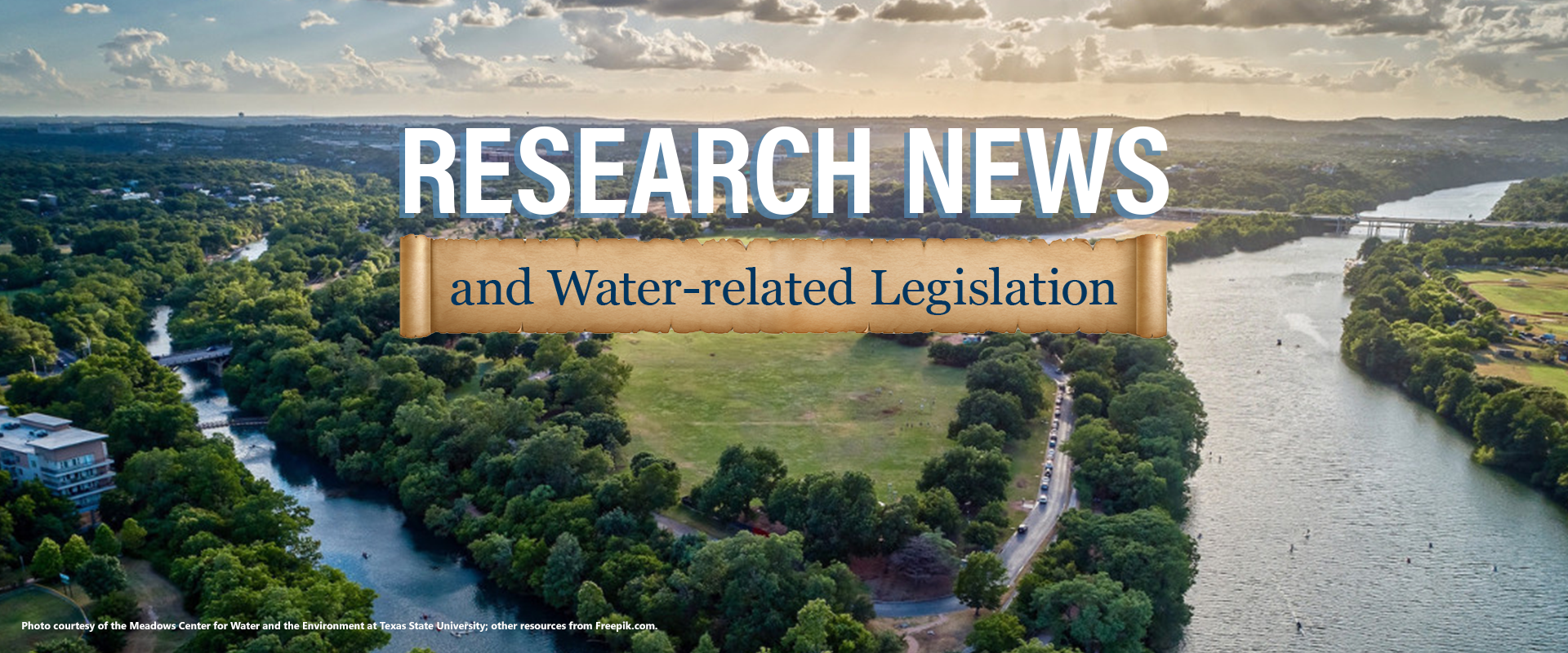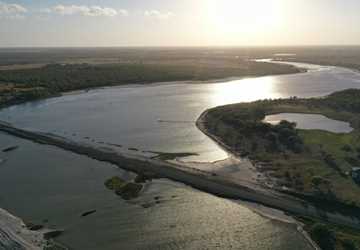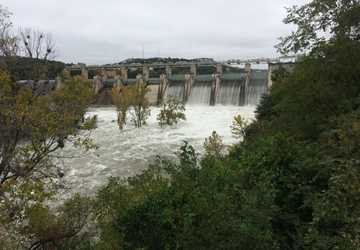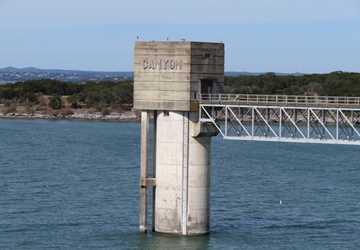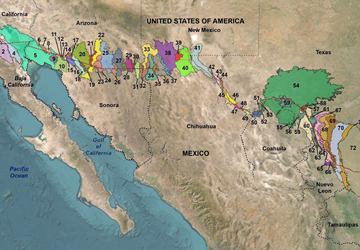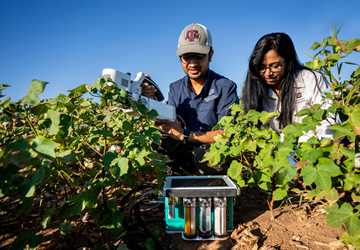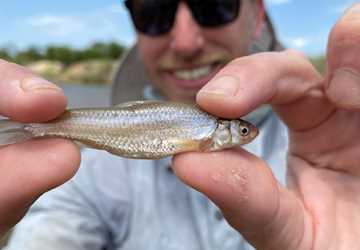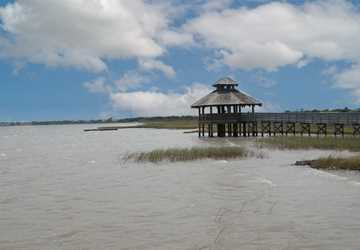Measuring the importance of Barton and Onion creek watersheds to the Colorado River
Barton Creek and Onion Creek contribute significant flows to the Colorado River, according to a study led by researchers at the Meadows Center for Water and the Environment at Texas State University.
The study compared streamflow contributions of the Pedernales River and Barton and Onion creeks to the Colorado River using daily discharge data from Sept. 24, 1998, to Aug. 31, 2022.
The research found that an average acre of land conserved in the watersheds of Barton and Onion creeks produced more than twice as much water to the Colorado River than an average acre of land in the Pedernales River watershed. Furthermore, daily flow into the Colorado River from Barton and Onion creeks surpassed that of the Pedernales River nearly half the time.
Estimated reading time: 4 minutes
Texas scientists work to uncover water solutions the state needs
Want to get txH20 delivered right to your inbox? Click to subscribe.
UT geoscientists using climate models to inform Austin’s long-term water plan

The city of Austin is funding a project led by University of Texas at Austin Jackson School of Geosciences researchers analyzing global climate models and downscaling them to inform regional water planning. The research is part of the city’s 100-year Water Forward plan.
The team has evaluated 35 global models from major modeling centers around the world to determine which best represent the Colorado River basin’s climatology and hydrology. These extremely complex models integrate the Earth’s oceans, atmosphere, land and ice sheets, and account for greenhouse gas concentrations, aerosol pollution, changes in land cover, urbanization and natural variations.
The models are so large that the resolution becomes fuzzy when trying to zero in on local areas, due to few data points, researchers explained. To improve the resolution, researchers downscale the models by using statistical relationships between what the models have shown on a broad global level and local climate data, such as data collected by the Texas Water Development Board (TWDB) and other agencies — precipitation, lake evaporation, stream flow, soil moisture and more. The interdisciplinary team is using a supercomputer at UT’s Texas Advanced Computing Center.
After downscaling the global models to better reflect local conditions, the results will be plugged into the Water Availability Model provided by the Texas Commission on Environmental Quality for the Colorado River basin and then used to inform the city’s planning.
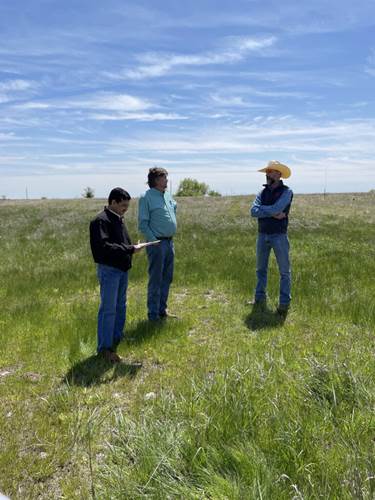
Adaptive multi-paddock grazing improves carbon sequestration, soil health
A Texas A&M AgriLife Research team used the Soil and Water Assessment Tool-Carbon (SWAT-C) model to evaluate the impacts of alternative grazing management practices on soil carbon sequestration and soil health indicators.
They simulated the impacts of three grazing management practices — heavy continuous, light continuous and adaptive multi-paddock grazing (or AMP, a form of rotational grazing) — on soil organic carbon, soil health indicators and hydrological parameters at the ranch- and watershed-scale in Northwest Texas.
Study results indicated that by adaptively maintaining moderate growing-season defoliation with adequate plant recovery time, AMP grazing can minimize the negative effects of area selective overgrazing under continuous grazing. AMP grazing can also enhance soil organic carbon, soil health and hydrological parameters.
Results also showed that prolonged high stocking rates and overgrazing by livestock can result in significantly less soil organic carbon and soil fertility on rangeland.
Daylong wastewater samples show limits of ‘snapshot’ samples
Research by Rice University scientists compared simple, “snapshot” samples of wastewater to daylong composite samples and found that snapshot samples were more likely to result in bias in testing for the presence of antibiotic-resistant genes (ARGs).
Their study showed that composite samples taken over 24 hours at an urban wastewater plant give a much more accurate representation of the level of ARGs in the water. The results could lead to better protocols for treating wastewater to lower the prevalence of ARGs in bacteria that propagate in treatment plants and can transfer ARGs to other organisms in the environment.

This year the Texas Legislature passed legislation related to water and natural resources, including:
- Senate Bill 28 and Senate Joint Resolution 75, which would create two new funding mechanisms at the Texas Water Development Board — the Texas Water Fund and the New Water Supply for Texas Fund. These funds potentially create $1 billion in funding for developing future water supplies and repairing and upgrading water infrastructure. The Texas Water Fund would be a constitutionally dedicated fund, and it will be on the ballot as a constitutional amendment during the fall statewide elections.
- Senate Bill 1648 and Senate Joint Resolution 74, which would create the Centennial Parks Fund, a new fund for acquiring private lands for state parks. Voters will also vote on this fund as a constitutional amendment during the fall statewide elections.

Explore this Issue
Authors
As communications manager, Leslie Lee leads TWRI's communications and marketing strategy and team, manages TWRI's publications, and coordinates effective communications support for TWRI's numerous projects serving the state of Texas.

